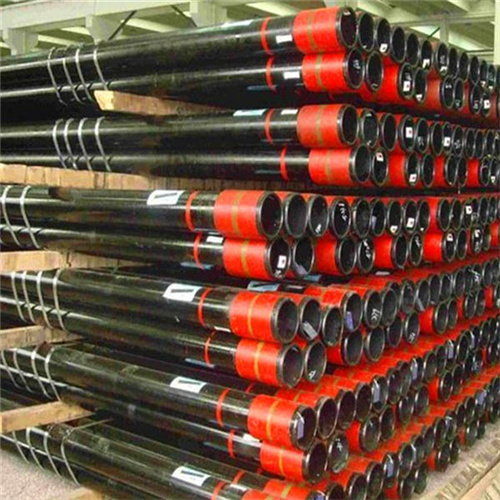Table of Contents
Advancements in Oil Casing Material Technology
Oil casing technology has seen significant advancements in recent years, with a focus on improving the materials used in the construction of oil casings. These innovations have been driven by the need to enhance the performance and durability of oil casings in challenging drilling environments. In this article, we will explore some of the latest developments in oil casing material technology and their impact on the oil and gas industry.

One of the key areas of focus in oil casing material technology is the development of high-strength, corrosion-resistant materials. These materials are essential for ensuring the integrity of oil casings in harsh drilling conditions, where they are exposed to corrosive fluids and high pressures. By using advanced alloys and coatings, manufacturers are able to enhance the resistance of oil casings to corrosion, thereby extending their service life and reducing the risk of well failures.
Another important aspect of oil casing material technology is the improvement of thermal insulation properties. In deepwater drilling operations, oil casings are exposed to extreme temperatures that can affect their structural integrity. By incorporating thermal insulation materials into the design of oil casings, manufacturers are able to minimize heat transfer and prevent thermal degradation, thereby ensuring the reliability of the casing in high-temperature environments.
Furthermore, advancements in oil casing material technology have also focused on enhancing the mechanical properties of oil casings. By using innovative manufacturing techniques, such as hot rolling and quenching, manufacturers are able to improve the strength and toughness of oil casings, making them more resistant to mechanical stresses and fatigue. This not only increases the Safety and reliability of oil casings but also allows for the use of thinner-walled casings, reducing costs and improving drilling efficiency.
In addition to these advancements, the use of composite materials in oil casing construction has also gained traction in recent years. Composite materials, such as carbon Fiber and fiberglass, offer a lightweight and high-strength alternative to traditional steel casings. By incorporating composite materials into the design of oil casings, manufacturers are able to reduce the weight of the casing string, making it easier to handle and install, while also improving its resistance to corrosion and fatigue.
Overall, the focus on oil casing material technology innovation has led to significant improvements in the performance and reliability of oil casings in the oil and gas industry. By using high-strength, corrosion-resistant materials, enhancing thermal insulation properties, improving mechanical properties, and incorporating composite materials, manufacturers are able to meet the demanding requirements of modern drilling operations. These advancements not only enhance the safety and efficiency of drilling operations but also contribute to the sustainability of the oil and gas industry by reducing environmental impact and increasing the lifespan of oil wells.
In conclusion, the continuous innovation in oil casing material technology is essential for meeting the challenges of the evolving oil and gas industry. By investing in research and development, manufacturers are able to develop advanced materials and manufacturing techniques that improve the performance, durability, and reliability of oil casings. These advancements not only benefit the oil and gas industry but also contribute to the overall sustainability and efficiency of energy production.
Impact of Digitalization on Oil Casing Design and Manufacturing
The oil and gas industry has always been at the forefront of technological innovation, constantly seeking ways to improve efficiency, safety, and sustainability. One area that has seen significant advancements in recent years is oil casing technology. Oil casing plays a crucial role in the drilling and production of oil and gas wells, providing structural support and protection for the wellbore. With the rise of digitalization, oil casing design and manufacturing have undergone a transformation, leading to improved performance and cost savings for operators.
Digitalization has revolutionized the way oil casing is designed and manufactured, allowing for greater precision and efficiency in the process. Advanced computer-aided design (CAD) Software enables engineers to create complex casing designs with ease, optimizing the performance of the casing while minimizing material waste. This level of precision would have been impossible without digital tools, allowing for more efficient drilling operations and reduced environmental impact.
In addition to design, digitalization has also had a significant impact on the manufacturing of oil casing. Advanced manufacturing technologies such as 3D printing and automated Machining have revolutionized the production process, allowing for faster turnaround times and higher quality products. These technologies have also enabled manufacturers to produce casing components with greater precision, leading to improved performance and reliability in the field.
Furthermore, digitalization has enabled real-time monitoring and data analysis of oil casing performance, allowing operators to identify potential issues before they escalate. Sensors embedded in the casing can provide valuable data on temperature, pressure, and corrosion Levels, helping operators make informed decisions about maintenance and repair. This proactive approach to maintenance can help prevent costly downtime and ensure the longevity of the well.
Overall, the impact of digitalization on oil casing design and manufacturing has been profound, leading to improved performance, cost savings, and sustainability for operators. By leveraging advanced digital tools and technologies, the oil and gas industry can continue to push the boundaries of innovation and drive towards a more efficient and sustainable future.

